Do you have a question about the Fronius VarioStar 2500 and is the answer not in the manual?
Welcome message and encouragement to read the manual carefully for optimal use and safety.
Defines DANGER!, WARNING!, CAUTION!, NOTE!, and Important! signal words and their implications.
Provides general safety advice regarding operation, misuse, and personnel qualifications for safe use.
Specifies the machine's intended use and prohibited applications, emphasizing manufacturer liability.
Details operating and storage temperature, humidity, and air quality requirements for optimal performance.
Outlines the responsibilities of the owner/operator regarding personnel training and adherence to safety rules.
Details personnel obligations before starting work and before leaving the workplace, emphasizing training.
Discusses potential effects of devices on mains power quality and necessary connection requirements.
Identifies hazards during welding (sparks, arc, fields, noise, fumes) and required protective clothing.
States the sound power level and explains the complexity of workplace-related emission values.
Warns about health hazards from welding fumes, their composition, and measures for ventilation and extraction.
Warns about fire and explosion risks from flying sparks and hot metal particles, and safe welding locations.
Details the life-threatening risks of electric shock from mains and welding current, and protective measures.
Explains causes and consequences of stray welding currents and how to prevent them through proper grounding.
Defines emission classes A and B for devices and their suitability for different settings based on interference.
Provides measures to prevent electromagnetic problems and ensure compatibility with surrounding equipment.
Discusses potential health effects of electromagnetic fields and necessary precautions, especially for users with medical devices.
Highlights dangers from moving parts, rotating wheels, and hot components, and safety during maintenance.
Covers risks of scalding from coolant and proper use of lifting devices, including strap limitations.
Lists shielding gas quality requirements and details dangers associated with pressurized gas cylinders.
Provides detailed safety instructions for handling, storing, and using shielding gas cylinders.
Covers safe placement, inclination limits, cleaning, installation clearances, and transportation procedures.
Emphasizes operating only with functional protective features and never bypassing safety devices.
Stresses using original spare parts, avoiding unauthorized modifications, and prompt component replacement.
Recommends periodic safety inspections and calibration by qualified personnel.
Instructs on proper disposal of the device in compliance with European directives to protect the environment.
Explains the meaning of CE and CSA markings concerning product standards and regulatory compliance.
States user responsibility for factory setting data security and manufacturer's non-liability for setting deletion.
Introduces VarioStar MIG/MAG power sources with preset control processes and robust construction.
Highlights compact design, integral drive system, and integral wire spool holder as key features.
Describes applications ranging from sheetwork to light steel and entrances using various wire types and gases.
Details warnings about incorrect voltage, general arc welding hazards, and basic safety rules on the machine.
Covers electric shock risks, fume hazards, arc ray dangers, noise, and explosion warnings on the machine.
Warns about incorrect operation and the need to read all relevant documents before using controls.
Details front panel controls including interval time adjuster, stage switch, mains switch, and sockets.
Explains wirefeed speed adjustment, scales, and connecting the welding torch.
Describes the operating mode selector and internal adjusters for gas post-flow, creep, speed, burn-off, and interval pause.
Warns about operating incorrectly and stresses reading safety rules before first use and avoiding improper applications.
Covers IP21 rating, outdoor operation, protection from wetting, and machine stability on firm floors.
Details mains voltage requirements, fuse protection, and tolerances for VST 1500, 2500, and 3100 models.
Specifies mains voltage and cable cross-section requirements for VST 2500 CSA and VST 3100 CSA models.
Warns about the fatal risk of electric shock during installation and outlines safety precautions.
Lists activities covered in commissioning and explains common symbols for machine operations.
Notes that electrical installations must match voltage and fuse protection, and data on the rating plate applies.
Details checking and setting transformers for correct mains voltage on standard VarioStar models.
Explains how to check and adjust welding transformer connections for CSA VarioStar models.
Emphasizes checking connections, cables, and hosepacks for proper condition and insulation.
Illustrates the procedure for connecting the welding torch to the machine's torch connection.
Provides a step-by-step guide for safely connecting the gas cylinder and pressure regulator.
Explains the importance of using correct feed rollers for the wire diameter and alloy for optimal wire feed.
Illustrates the procedure for inserting or replacing feed rollers on the wire feed unit.
Describes how to adjust wire feed for proper transport without rubbing, and notes service limitations.
Warns about risks of injury from springy wire and falling spools during wire spool insertion.
Illustrates the procedure for inserting a wire spool onto the wirespool holder.
Details the process of mounting a basket-type spool using a manufacturer-provided adapter.
Warns about injury from springy wire and sharp wire ends during welding wire feeding.
Illustrates the step-by-step process for feeding welding wire through the wire feed unit and torch.
Explains how to adjust contact pressure for proper wire transport without deformation, with reference values.
Illustrates the steps for setting the shielding gas flow rate using the gas cylinder and regulator.
States that the wire spool should stop unreeling after trigger release and advises brake adjustment.
Provides illustrations showing how to adjust the wire spool brake for proper function.
Shows an exploded view of the brake assembly and notes its availability as a complete unit.
Warns about incorrect operation and the need to understand all instructions before using operating modes.
Defines symbols and abbreviations used to describe welding current, phases, and time parameters.
Describes the 2-step mode suitable for tacking, short seams, and automatic operation.
Describes the 4-step mode, suitable for longer weld seams.
Explains the spot welding mode for joining overlapped sheets and the procedure for welding a spot.
Details interval modes for bridging air gaps, allowing the weld pool to cool between intervals.
Covers safety warnings and initial connection steps for MIG/MAG welding operations.
Explains synchronizing voltage and wirefeed speed for optimal MIG/MAG welding results.
Warns about incorrect operation and the need to read all instructions before performing spot welding.
Describes the procedure for spot welding, including parameter setting and torch attachment.
Provides safety warnings before opening the machine and checks for discharged components.
Lists causes and remedies for issues when the torch trigger is pressed but no action occurs.
Addresses issues like poor earth connection, phase loss, and improper operating mode selection for arc quality.
Covers problems with wirefeed speed, spool brake, contact tube, feed rollers, and torch configuration.
Addresses issues related to afterglow time affecting welding wire sticking to the contact tube or pool.
Explains causes for torch/hosepack overheating, including design limits and cooling system issues.
Troubleshoots no-arc conditions, tripping mains fuses, or circuit breakers due to settings or weak breakers.
Covers issues with interval welding results and irregular spot welding quality due to incorrect settings or alignment.
Addresses insufficient spot weld penetration due to short weld time, low power, or low wirefeed speed.
Lists faults requiring After-Sales Service, such as phase missing, faulty PCBs, or component failures.
Stresses minimum care and maintenance for longevity, with safety warnings before opening the machine.
Outlines routine checks for connections, cooling air flow, and periodic cleaning of internal components.
Provides instructions for disposing of the device in accordance with applicable national and local regulations.
Notes that electrical installations must match voltage and fuse protection, and data on the rating plate applies.
Presents technical specifications including mains voltage, tolerance, frequency, current, power, efficiency, and dimensions.
Lists technical specifications for VST 3100 models, including voltage, current, power, efficiency, and dimensions.
Details part numbers for 'Profi' type wire feed rollers for various wire diameters and materials.
Lists part numbers for 'Heavy Duty' wire feed rollers for different wire diameters.
Provides the part number for the pressure roller used in wire feed systems.
Provides the part number for the drive roller used in wire feed systems.
Welcome message and encouragement to read the manual carefully for optimal use and safety.
Defines DANGER!, WARNING!, CAUTION!, NOTE!, and Important! signal words and their implications.
Provides general safety advice regarding operation, misuse, and personnel qualifications for safe use.
Specifies the machine's intended use and prohibited applications, emphasizing manufacturer liability.
Details operating and storage temperature, humidity, and air quality requirements for optimal performance.
Outlines the responsibilities of the owner/operator regarding personnel training and adherence to safety rules.
Details personnel obligations before starting work and before leaving the workplace, emphasizing training.
Discusses potential effects of devices on mains power quality and necessary connection requirements.
Identifies hazards during welding (sparks, arc, fields, noise, fumes) and required protective clothing.
States the sound power level and explains the complexity of workplace-related emission values.
Warns about health hazards from welding fumes, their composition, and measures for ventilation and extraction.
Warns about fire and explosion risks from flying sparks and hot metal particles, and safe welding locations.
Details the life-threatening risks of electric shock from mains and welding current, and protective measures.
Explains causes and consequences of stray welding currents and how to prevent them through proper grounding.
Defines emission classes A and B for devices and their suitability for different settings based on interference.
Provides measures to prevent electromagnetic problems and ensure compatibility with surrounding equipment.
Discusses potential health effects of electromagnetic fields and necessary precautions, especially for users with medical devices.
Highlights dangers from moving parts, rotating wheels, and hot components, and safety during maintenance.
Covers risks of scalding from coolant and proper use of lifting devices, including strap limitations.
Lists shielding gas quality requirements and details dangers associated with pressurized gas cylinders.
Provides detailed safety instructions for handling, storing, and using shielding gas cylinders.
Covers safe placement, inclination limits, cleaning, installation clearances, and transportation procedures.
Emphasizes operating only with functional protective features and never bypassing safety devices.
Stresses using original spare parts, avoiding unauthorized modifications, and prompt component replacement.
Recommends periodic safety inspections and calibration by qualified personnel.
Instructs on proper disposal of the device in compliance with European directives to protect the environment.
Explains the meaning of CE and CSA markings concerning product standards and regulatory compliance.
States user responsibility for factory setting data security and manufacturer's non-liability for setting deletion.
Introduces VarioStar MIG/MAG power sources with preset control processes and robust construction.
Highlights compact design, integral drive system, and integral wire spool holder as key features.
Describes applications ranging from sheetwork to light steel and entrances using various wire types and gases.
Details warnings about incorrect voltage, general arc welding hazards, and basic safety rules on the machine.
Covers electric shock risks, fume hazards, arc ray dangers, noise, and explosion warnings on the machine.
Warns about incorrect operation and the need to read all relevant documents before using controls.
Details front panel controls including interval time adjuster, stage switch, mains switch, and sockets.
Explains wirefeed speed adjustment, scales, and connecting the welding torch.
Describes the operating mode selector and internal adjusters for gas post-flow, creep, speed, burn-off, and interval pause.
Warns about operating incorrectly and stresses reading safety rules before first use and avoiding improper applications.
Covers IP21 rating, outdoor operation, protection from wetting, and machine stability on firm floors.
Details mains voltage requirements, fuse protection, and tolerances for VST 1500, 2500, and 3100 models.
Specifies mains voltage and cable cross-section requirements for VST 2500 CSA and VST 3100 CSA models.
Warns about the fatal risk of electric shock during installation and outlines safety precautions.
Lists activities covered in commissioning and explains common symbols for machine operations.
Notes that electrical installations must match voltage and fuse protection, and data on the rating plate applies.
Details checking and setting transformers for correct mains voltage on standard VarioStar models.
Explains how to check and adjust welding transformer connections for CSA VarioStar models.
Emphasizes checking connections, cables, and hosepacks for proper condition and insulation.
Illustrates the procedure for connecting the welding torch to the machine's torch connection.
Provides a step-by-step guide for safely connecting the gas cylinder and pressure regulator.
Explains the importance of using correct feed rollers for the wire diameter and alloy for optimal wire feed.
Illustrates the procedure for inserting or replacing feed rollers on the wire feed unit.
Describes how to adjust wire feed for proper transport without rubbing, and notes service limitations.
Warns about risks of injury from springy wire and falling spools during wire spool insertion.
Illustrates the procedure for inserting a wire spool onto the wirespool holder.
Details the process of mounting a basket-type spool using a manufacturer-provided adapter.
Warns about injury from springy wire and sharp wire ends during welding wire feeding.
Illustrates the step-by-step process for feeding welding wire through the wire feed unit and torch.
Explains how to adjust contact pressure for proper wire transport without deformation, with reference values.
Illustrates the steps for setting the shielding gas flow rate using the gas cylinder and regulator.
States that the wire spool should stop unreeling after trigger release and advises brake adjustment.
Provides illustrations showing how to adjust the wire spool brake for proper function.
Shows an exploded view of the brake assembly and notes its availability as a complete unit.
Warns about incorrect operation and the need to understand all instructions before using operating modes.
Defines symbols and abbreviations used to describe welding current, phases, and time parameters.
Describes the 2-step mode suitable for tacking, short seams, and automatic operation.
Describes the 4-step mode, suitable for longer weld seams.
Explains the spot welding mode for joining overlapped sheets and the procedure for welding a spot.
Details interval modes for bridging air gaps, allowing the weld pool to cool between intervals.
Covers safety warnings and initial connection steps for MIG/MAG welding operations.
Explains synchronizing voltage and wirefeed speed for optimal MIG/MAG welding results.
Warns about incorrect operation and the need to read all instructions before performing spot welding.
Describes the procedure for spot welding, including parameter setting and torch attachment.
Provides safety warnings before opening the machine and checks for discharged components.
Lists causes and remedies for issues when the torch trigger is pressed but no action occurs.
Addresses issues like poor earth connection, phase loss, and improper operating mode selection for arc quality.
Covers problems with wirefeed speed, spool brake, contact tube, feed rollers, and torch configuration.
Addresses issues related to afterglow time affecting welding wire sticking to the contact tube or pool.
Explains causes for torch/hosepack overheating, including design limits and cooling system issues.
Troubleshoots no-arc conditions, tripping mains fuses, or circuit breakers due to settings or weak breakers.
Covers issues with interval welding results and irregular spot welding quality due to incorrect settings or alignment.
Addresses insufficient spot weld penetration due to short weld time, low power, or low wirefeed speed.
Lists faults requiring After-Sales Service, such as phase missing, faulty PCBs, or component failures.
Stresses minimum care and maintenance for longevity, with safety warnings before opening the machine.
Outlines routine checks for connections, cooling air flow, and periodic cleaning of internal components.
Provides instructions for disposing of the device in accordance with applicable national and local regulations.
Notes that electrical installations must match voltage and fuse protection, and data on the rating plate applies.
Presents technical specifications including mains voltage, tolerance, frequency, current, power, efficiency, and dimensions.
Lists technical specifications for VST 3100 models, including voltage, current, power, efficiency, and dimensions.
Details part numbers for 'Profi' type wire feed rollers for various wire diameters and materials.
Lists part numbers for 'Heavy Duty' wire feed rollers for different wire diameters.
Provides the part number for the pressure roller used in wire feed systems.
Provides the part number for the drive roller used in wire feed systems.
| Mains Voltage | 3 x 400 V |
|---|---|
| Protection Class | IP23 |
| Rated mains voltage | 3 x 400 V |
| Rated welding current at 40°C | 250 A |
| Mains voltage tolerance | +15% / -15% |
| Mains frequency | 50-60 Hz |
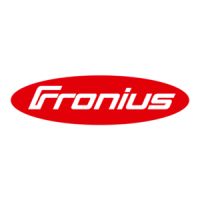

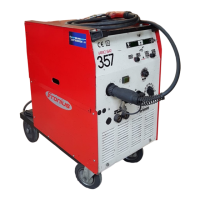

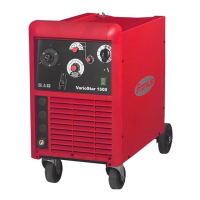


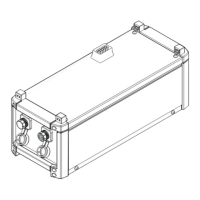
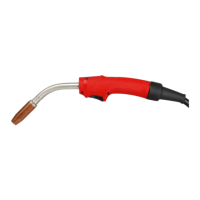
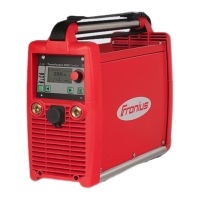
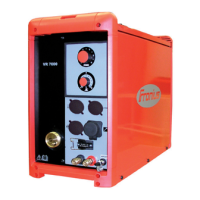

